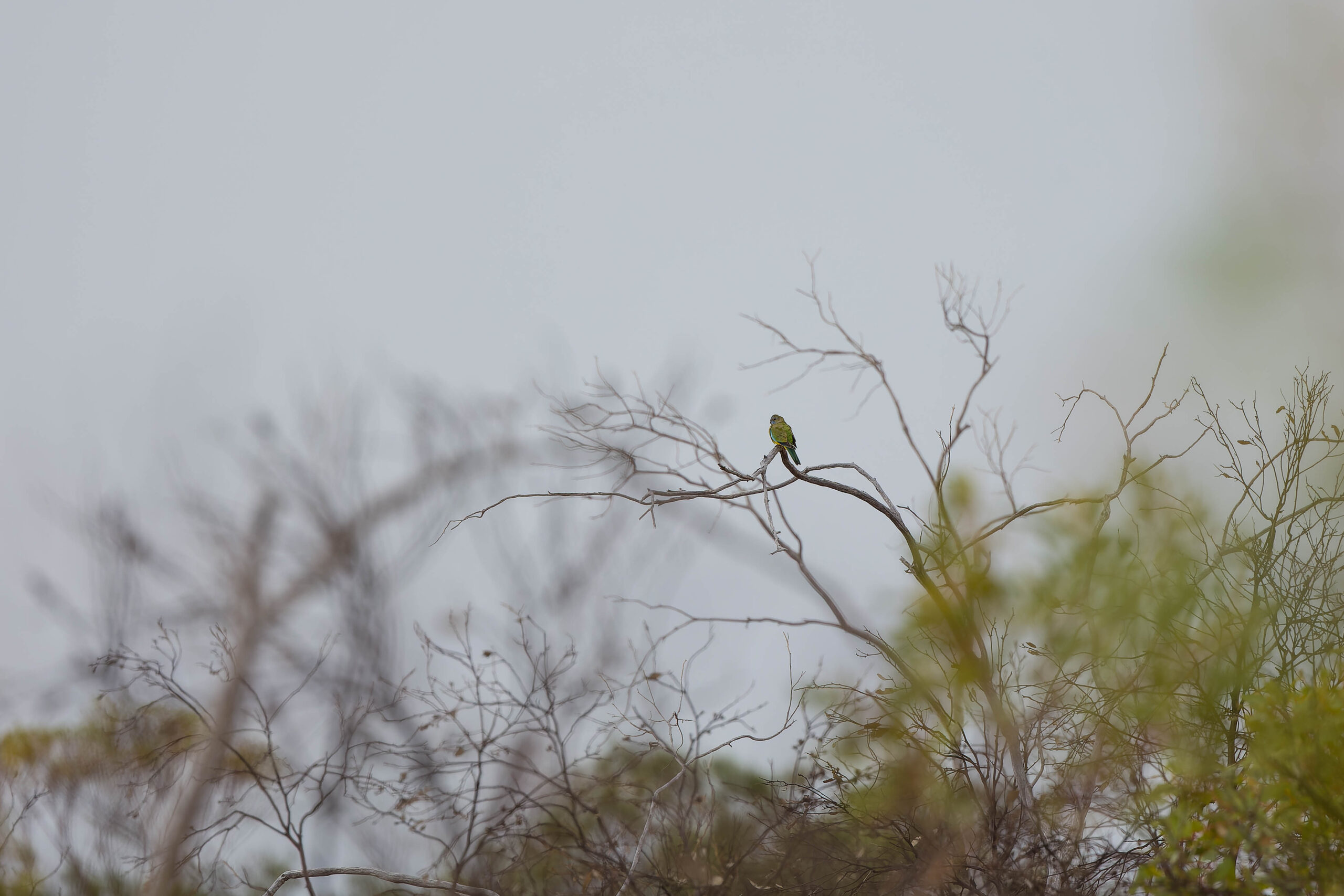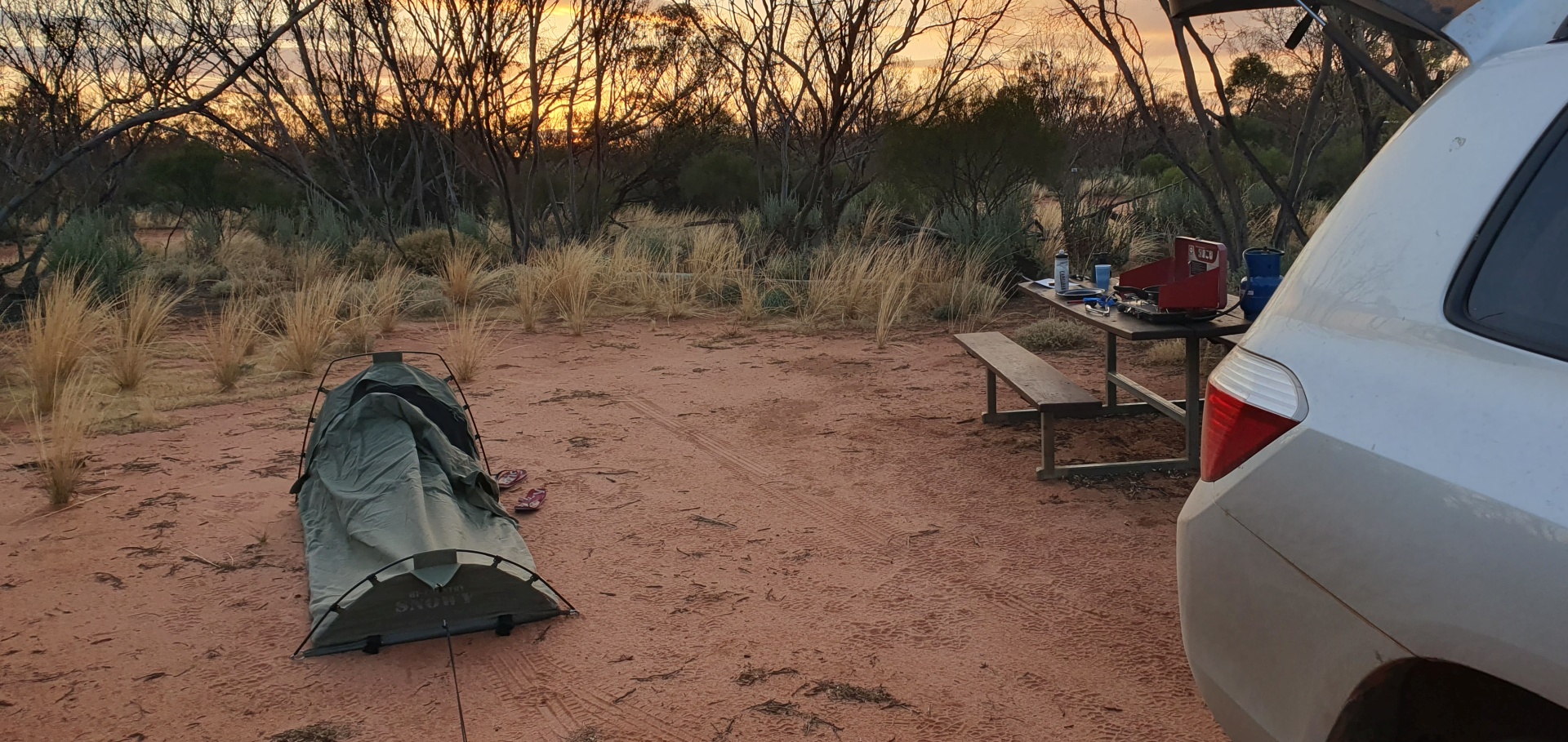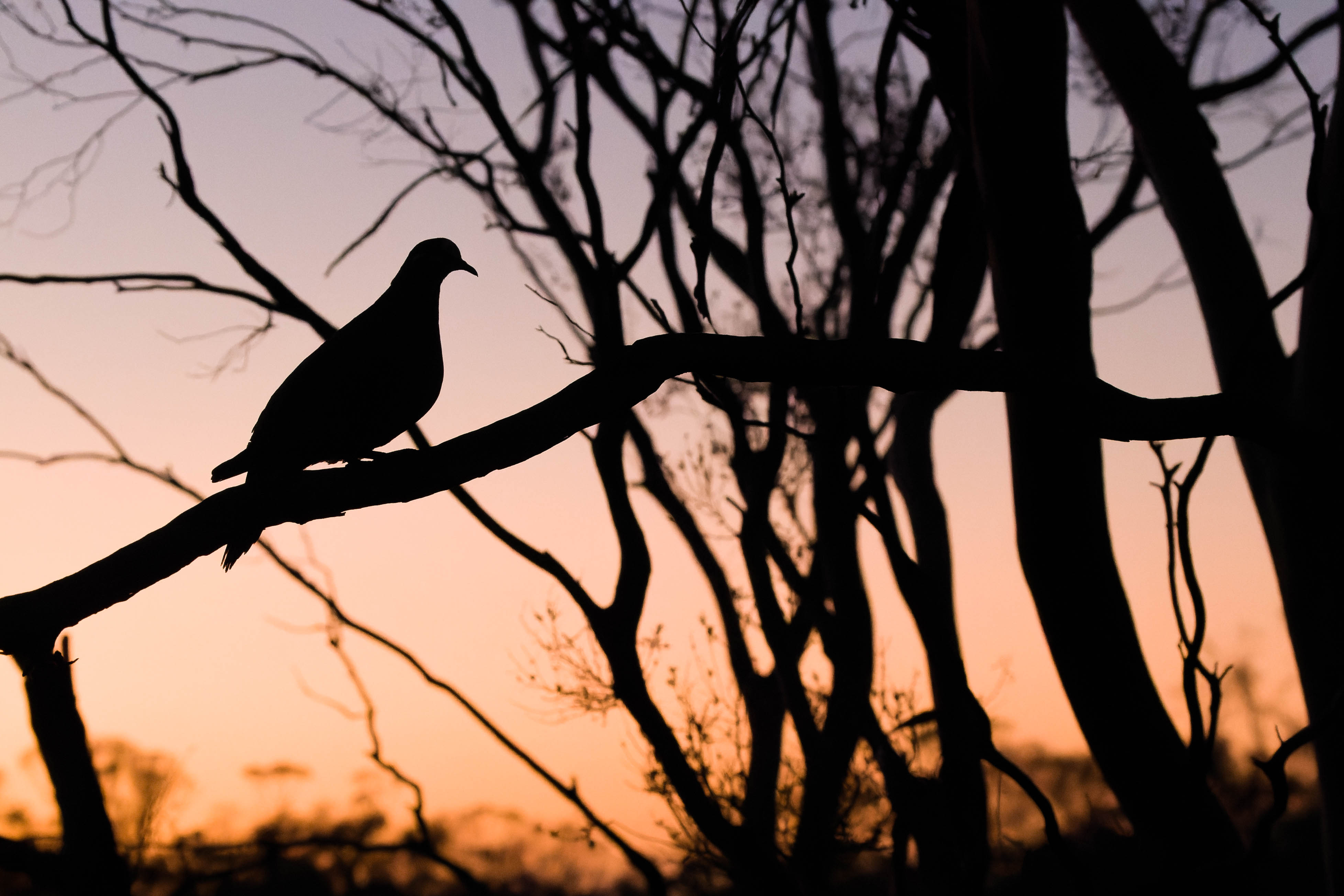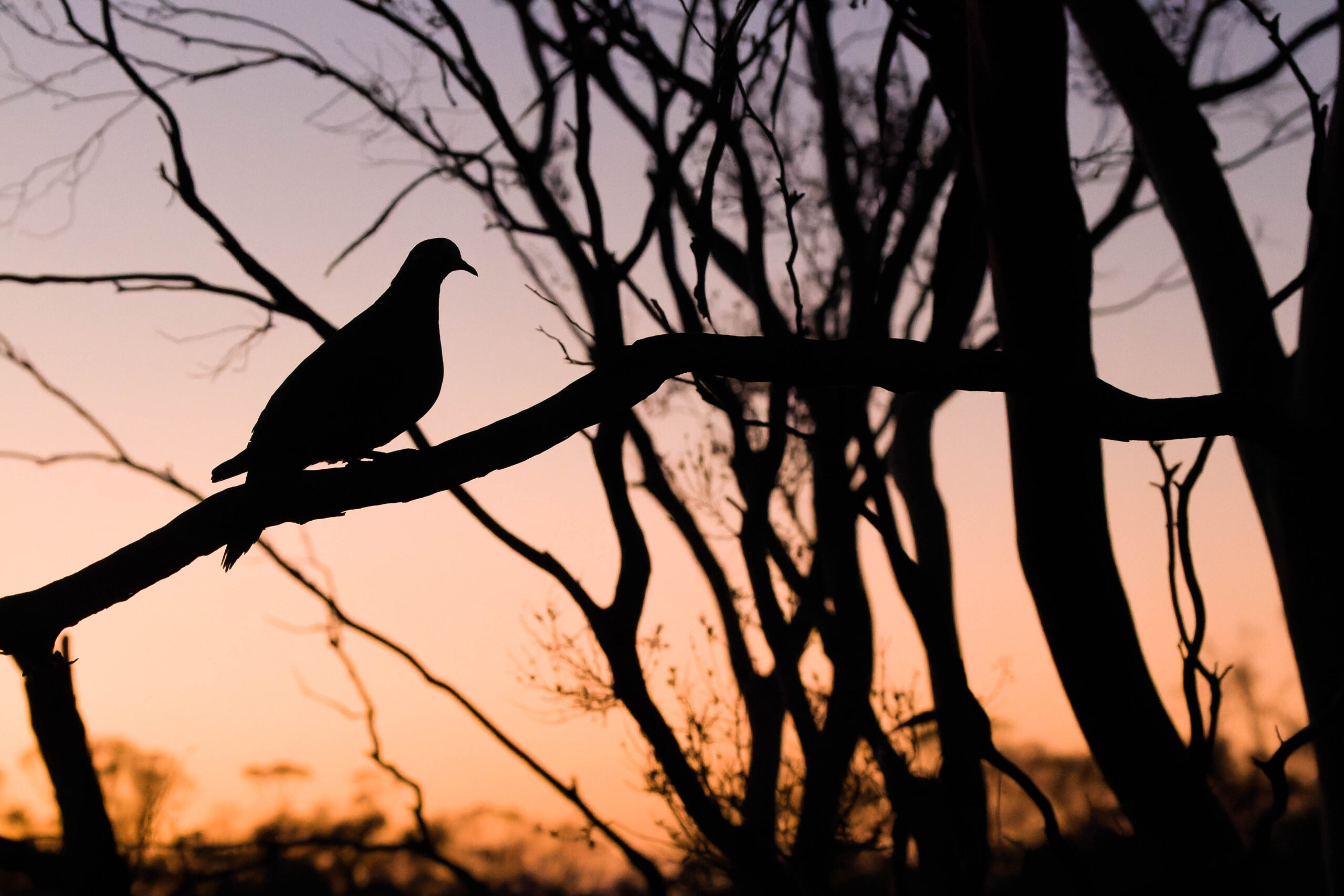We are lucky, living in Adelaide, to be only a 3-and-a-bit hour drive from Gluepot Reserve, a former cattle station in South Australia’s mallee region that is now owned by Birdlife Australia and operated as a superb nature reserve. Gluepot is just about the most accessible part of the internationally important Bookmark Biosphere that covers 1M hectares of the state’s mid-east, north of the Murray. The fabulous array of mallee specialty birds possible at Gluepot includes several rare and endangered birds for which Gluepot is among the best places anywhere. The key four species, all of which I have seen there over the years are: Black-eared Miner, Red-lored Whistler, Striated Grasswren and Scarlet-chested Parrot.
I first visited Gluepot in 2007 as a one day extension to a work trip for a conference in Adelaide. I booked Peter Waanders as a guide for half a day and we had a brilliant time. He managed to help me see my first ever collection of mallee birds, with 23 lifers including 3 of the big 4, Black-eared Miner, Striated Grasswren and Red-lored Whistler, though I was travelling light for work and had neither camera nor digi-scoping kit with me. Then 5 years later, a mere 3 weeks after emigrating in September 2012 I made my next visit when I found out that the 4th specialty, Scarlet-chested Parrot, was known to be breeding on the reserve’s southern edge. Since then my visits have been more-or-less annual. Sometimes this has been as a day visitor; it’s just about doable as a long day from Adelaide and I recall once even persuading Erica to come with me and watch and photograph birds from the hides. But I have also often camped for one or two nights, and enjoyed the solitude and huge starry skies. I’d love to visit more, but family, work and even other birding have a habit of getting in the way. You know how it is.


I have previously blogged about Gluepot when I made a few visits in 2021, initially because of an extra week of leave Adelaide Uni “gave” all its staff (see here), and later in the year accompanying Mike Potter on is Big Year quest to see more than 374 species in SA for the year (see here). The rationale for blogging on this occasion is that over the last two weekends I have made successive trips; this text provides some context for the 1000s of photos I took.
On Sunday 19th Feb I did a long day trip and had an excellent day, though missed two key targets which rankled particularly when I returned to Adelaide and discovered that friends had seen both in the days (and in one case, even in the minutes) before my visit. There’s no phone signal that far from civilisation, so you can’t get updates from the field! How old-school :-). Then, 25-26 Feb, knowing Nikki was going to be out Saturday night, I got her blessing to camp overnight, and had another excellent couple of (half-)days.
The first trip was designed to try to find some immature Scarlet-chested Parrots that were being seen fairly regularly towards the eastern boundary of the publicly accessible part of the reserve. I’d also been told about some Striated Grasswrens not far from there. This latter species population had plummeted over the years so that despite lots of searching in 2012 and subsequently, I had not seen one in Gluepot since 2007. The latest record from anyone that I was aware of dated from 2015. After several dry summers, La Nina over the last three has rejuvenated the spinifex and seemingly also the Grasswren population which is re-colonising part of the reserve naturally. Just brilliant!
As you know from above, I dipped on both. Nevertheless I had a very enjoyable day and some really nice encounters. As I walked back along the 3km trek back to my car after hearing but not seeing grasswrens, I had a very nice encounter with a pair of Shy Heathwren, one of whom was not so shy after all.




Then I used the heat of the day to sit in some of the hides and watch the comings and goings of parrots and honeyeaters, jostling for positions at the water-trough. I had a few Gilbert’s Whistlers around the place. Along Track 7 I came across a small group of Miners, at least 4 of which had the dark rump and cheeks, and other fields marks of fairly pure Black-eared Miners (but I didn’t try for photos). At Kangaroo Dam I had two Striped Honeyeater, then two more and then along Track 3, my own personal highest count of this nomadic species.
Full ebird list here, and here are some more of the pics from 17th:









Eager to rectify the dip, I was pleased to see that the mid-week heatwave of 40+ degree days was set to break on Friday evening and I left Adelaide at the leisurely hour of 8.30. It rained most of the way. Until I reached Blanchetown this didn’t bother me; surely the BOM was correct to have forecast cooler but sunny day for Waikerie? Nope, they’d got it wrong and it was drizzly most of the way north on the 50km corrugated track to Gluepot.
At least by now it was clear there’d not been enough rain to close the reserve. And as a superb bonus, the rain and overcast conditions on my arrival in the middle of the day had the effect of reinvigorating the birds. I enjoyed a superb couple of hours. As I walked Track 8 from the Oil Line I noticed a small parrot perched on a bare branch. The light was poor, but could this be what I was after??

You betcha! I walked around to try to get slightly better light and it flew down, but not far nd joined some others. I counted a maximum of 5-6 Scarlet-chested Parrots, that were very quiet, unobtrusive, but quite confiding.







Then, at 2.30 after a long walk, I found Striated Grasswren and scored my best ever views and photos of this tricky species. In fact this was the first SGW I’d seen n Gluepot since my first ever, with Peter back in 2007 when I was a tourist! The technique that worked this time was really just staying still and keeping very quiet. Eventually one of them got curious and decided to check me out!



Once I’d set my swag at Babbler Campsite I spent the late afternoon in one of the hides drinking a beer and just watching to see what would come in for some water. Dozens of Common Bronzewing made their way cautiously to the trough, but nothing more interesting before I decided to get back to the campsite in the last of the day’s light so I would not be cooking up my snags in the dark.

Over the course of the later afternoon the cloud had cleared and the air warmed. It was also, mercifully mozzie-free, so I kept the swag open so I could stare up at the huge sky and bright Milky Way. These Riverland skies are famous for their clear air, zero light pollution and amazingly bright stars.
Sunday morning I rose pre-dawn and returned to Emu Tank hide to see what would come for a drink. Last in the evening, first in the morning, scores of Bronzewing arrived before sunrise.

By about 7.15 they had been replaced by around 40 Mulga Parrots, who gave way to 3 fabulous Regent Parrots.






But just as I hoped more Regents or something else interesting would arrive, A Collared Sparrowhawk showed up, spooking everything. For a raptor in the mallee, these water troughs must feel like a KFC drive-thru. “Can I take your order?” “Yes, I’ll have a Yellow-plumed Honeyeater with a side of Zebra Finch”. “Do you want to go large?” “Oh why not, give me a Bronzewing instead of the Honeyeater”. After 15 min the Sprawk still hanging about and the trough was still devoid of birds, so I too decided to leave.
Back on the eastern side of the reserve I relocated a flock of SCPs, but they travelled off east too far for me track down on foot. As I walked back to the main track, I noticed that one had stayed behind and was feeding quietly. It shuffled around on the ground and on very low perches, allowing one or two quite close pictures.


Once I had packed away the swag it was late morning and I was eager to be back in Adelaide early-mid afternoon as I’d promised Nikki. To round out the blog, here’s a few more pics of other birds I encountered: Bested Crellbird, Red-capped Robin and Grey Currawong




